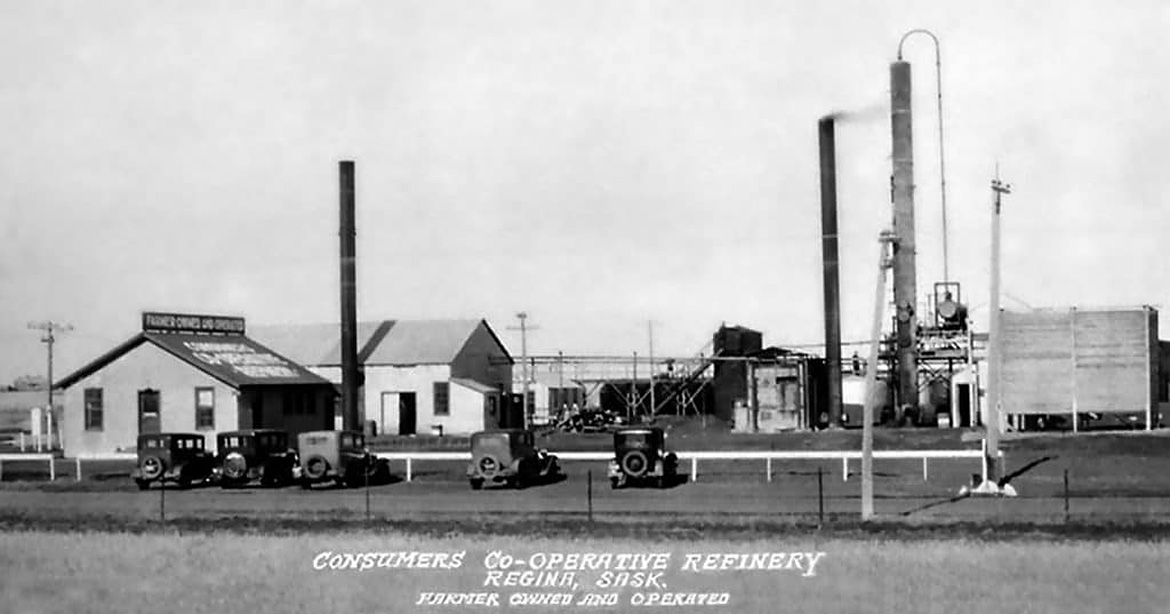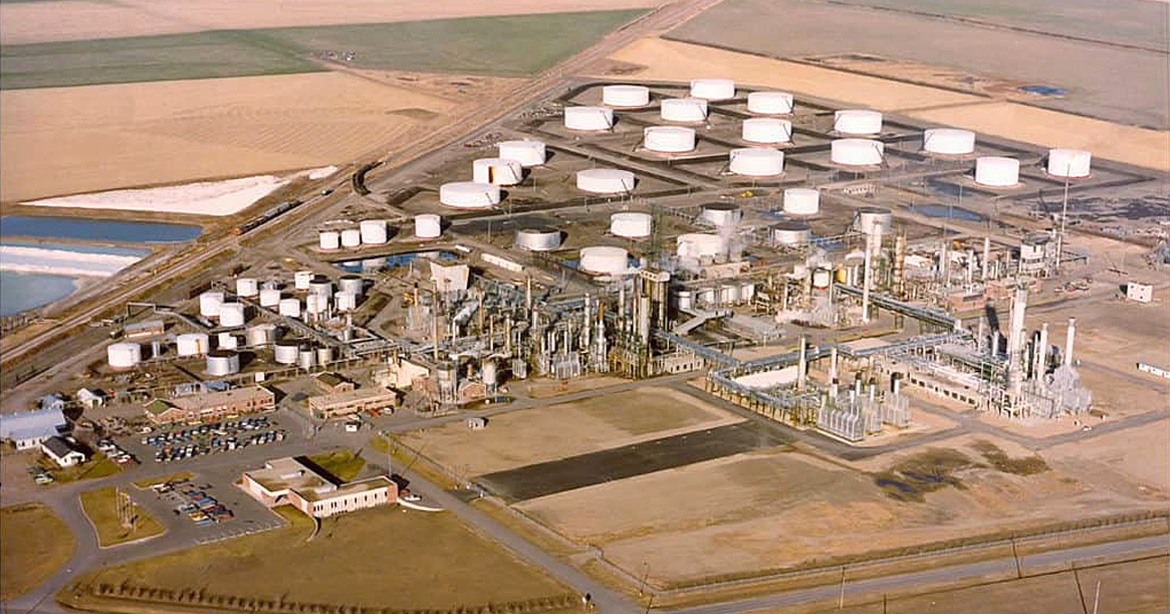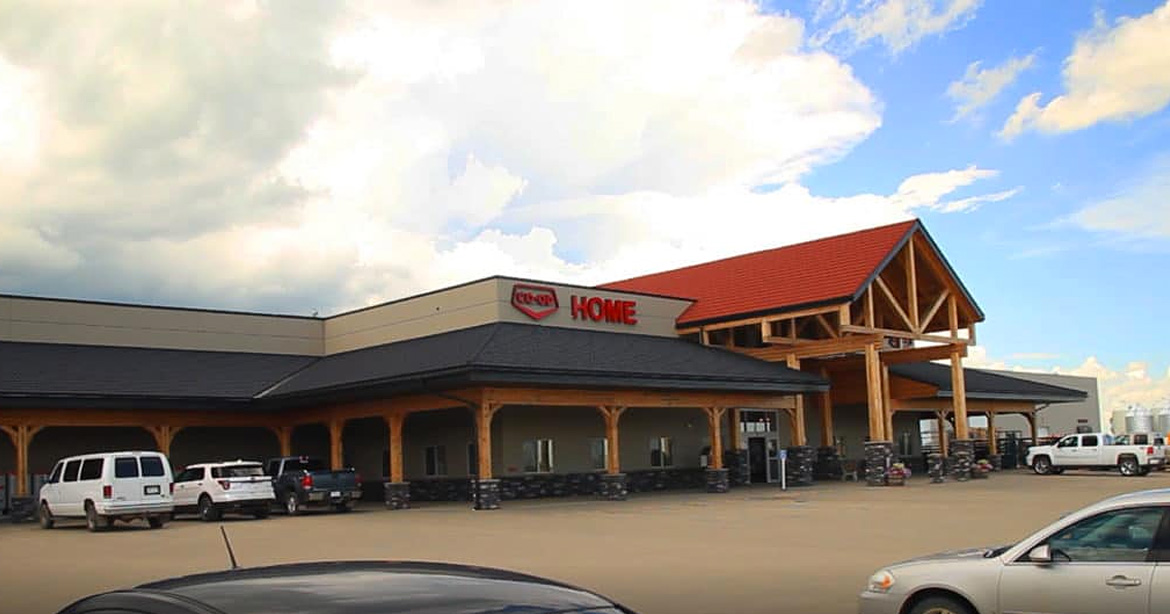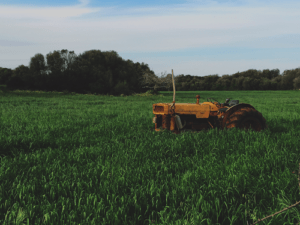Co-ops and the prairies share a history
Much of western Canada was settled with the help of co-ops, but prairie co-ops are often-overlooked (and misunderstood) economic gems.
Co-ops brought electricity to farms and rural communities in Alberta. For much of the early 20th Century, the business model helped farmers across the prairies get fairer prices for their products. Buying co-ops brought goods and fuel to settler communities, making these goods more affordable.
The legacy of these co-ops can still be found in many small towns throughout the western provinces.
Fueling Western Canada

A great example of this legacy is the Co-operative Refinery Complex (CRC) in Regina, SK.
When fuel prices got too high in the 30s – a combination of tariffs and a couple US oil conglomerates buying up prairie-based producers – a handful of farmers banded together to purchase a skimming plant to help mitigate the high crop input cost of fuel.
Over time, this skimming plant expanded – thanks to a few visionary farmers remortgaging land and sometimes going without food – and now produces 6.1 billion litres of fuel in a year (2018) and can process up to 130,000 barrels of crude per day.
This unique multi-billion-dollar oil refinery fuels much of western Canada, directly employs over 1000 people, continues to help reduce a major input cost for prairie farmers, and purchases primarily western Canadian bitumen. The impact on western Canada’s economy is significant.

A way of life
Co-ops are a major part of life in western Canada. They support and supply key economic drivers in the prairies, like oil and ag, and they have been doing so for a hundred years or more.
I grew up in a small but mighty mining town in southeastern Saskatchewan. My father ran the local co-op grocery store. My first job was with a local co-op. While in university, a job with Sherwood Co-op in Regina helped me pay my way through school.
I’ve worked for, run, and sat on the board of co-ops. Today, I promote the business model in rural and Indigenous communities across western Canada thanks to the generous support of the Co-operative Retailing System and Federated Co-operatives Limited (another clear indication of these co-ops’ commitment to western Canada).
Co-ops have played a role in my life and I’ve clearly benefited from them. But I’m not simply speaking for myself here. From traveling across the prairies and talking to numerous economic developers and other community leaders, I can tell you the impact of co-ops on local economies in western Canada can’t be overstated.
Almost every little town on a prairie road trip has a co-op gas station or at least a cardlock. Often the decedents of early group purchasing co-ops, these businesses are history living alongside us. In a lot of these towns, a co-op is the lone business left standing. Often co-ops are key employers in many rural areas.
Today, how we use the model is evolving somewhat. We’re seeing renewed interest in the producer co-op model across the western provinces thanks to the legalization of cannabis. Multi-stakeholder platform co-op, Stocksy United, has elevated an industry through their unique use of the model. And investment co-ops are slowly (because it’s hard) becoming an innovative economic development and investment tool for rural communities.

Good for local economies – big and small
Co-ops have a clear connection to farms and rural living, but they also play an important role in prairie cities.
Calgary Co-op employs over 3,800 people and has sales over $1 billion. Red River Co-op in Winnipeg purchases over $5 million in locally produced goods and pumped over $40 million directly back into the local economy through patronage cheques to its members – and that’s not including wages, social investments, volunteer hours, and sponsorships.
The indirect benefits of a locally-owned business this large is significant. Families, businesses and local farmers depend on this business. Mortgages, wages, and investments are made because of this business. In short, the business matters socially, culturally, and economically to everyone in the area – whether they’re a member or not.
A unique feat of governance
These independent co-ops also own a share in a federation – a co-op of co-ops – called Federated Co-operatives Limited (FCL). This federation is an administrative and wholesale support business.
Its head office happens to be in Saskatoon – but don’t confuse it with Saskatoon Co-op, a locally owned co-op with close to 1100 employees and nearly $500 million in sales of its own.
Despite its intimidating title, FCL is not a corporate overlord for co-ops. Quite the opposite. FCL is governed and owned by roughly 180 co-op businesses with 2,500 retail locations employing about 22,000 people in over 580 communities across the prairies. These co-ops run FCL, not the other way around.
The story of the CRS and FCL is an amazing and unique feat of prairie-style co-operation, and the impact on western Canada continues to be significant.

Big and small impacts
FCL alone employs over 3,400 people, manages a refinery, and creates major economic impacts that literally fuel western Canada – one small town and one big tractor at a time. Last year, the business had revenues near $10B and a profit over $1B. This profit is largely redistributed throughout the entire prairie region via the 180 co-ops that own FCL.
What happens with that money? Schools get playground equipment. Food banks and other charities receive hundreds of thousands in support each year. Community gardens, skate parks, conservation areas, and numerous other social and cultural places and events that you enjoy are supported by these local co-ops.
Two million dollars is being invested right now into western Canadian communities just through the Co-operative Retailing System Community Spaces program alone.
Besides retail co-ops, credit unions (which are financial co-ops) add a huge economic bump on top of that. With billions in assets, credit unions across western Canada finance local businesses, mortgage houses and, importantly, put the profits they make in the pockets of the folks who bank with them and the communities they operate in.
Increasing local wealth
Profits from co-ops, like most small to medium enterprises, grow and benefit their local economies.
This feature is a major difference from investor-driven organizations: profits stay in the local economy and help build local wealth. As western Canadians, we benefit directly from these businesses.
Consider a co-op
So, consider a co-op. It’s a different – and sometimes better – way to do business.
Your local co-op is paying wages, buying quality locally produced goods, sometimes providing critical utilities and services, reducing input costs for farmers, purchasing western Canadian bitumen and pumping billions into the western Canadian economy.
It’s also sponsoring your Chamber, perhaps a hockey team or two, and putting up a slide in the school playground. That’s good for everyone.
So, next time you pass by your local co-op, show that economic gem a little love. It plays an important role in your community and in communities across the prairies.




